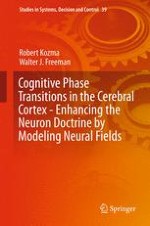2016 | OriginalPaper | Chapter
20. Commentary by Ichiro Tsuda
Self-organization of the Second Kind: A Variational Approach
Author : Ichiro Tsuda
Published in: Cognitive Phase Transitions in the Cerebral Cortex - Enhancing the Neuron Doctrine by Modeling Neural Fields
Publisher: Springer International Publishing
Activate our intelligent search to find suitable subject content or patents.
Select sections of text to find matching patents with Artificial Intelligence. powered by
Select sections of text to find additional relevant content using AI-assisted search. powered by
